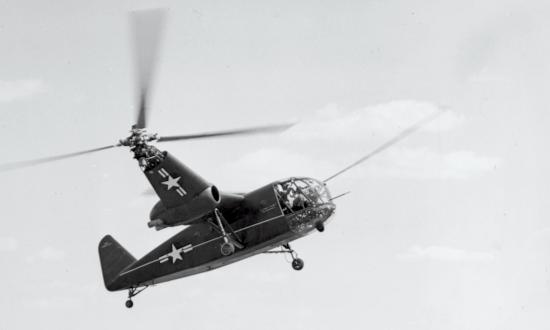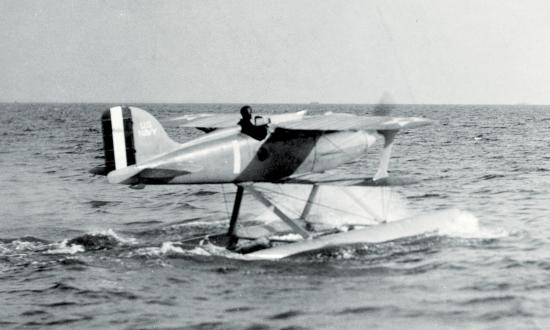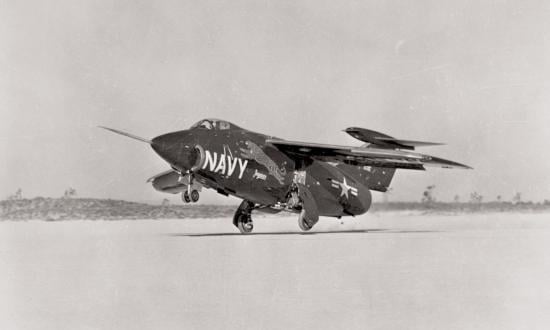The Convair 440 airliner in military service was a most versatile aircraft, being flown in casualty evacuation, passenger, VIP, cargo, electronic, aerial mapping, and training configurations—with even an antisubmarine variant proposed.1 The aircraft was designed for American Airlines as a replacement for the venerable Douglas DC-3 that was flown by the military as the Navy–Marine R4D and Army/Air Force C-47/C-53/C-117; their names Skytrain and Dakota were emblazoned in the history of World War II.
The commercial aircraft first flew on 16 March 1947, and orders quickly followed from several U.S. and foreign airlines. The U.S. Air Force acquired its first aircraft—the C-131A Samaritan—in 1950. It was configured for casualty evacuation and soon was followed by other C-131 variants for the Air Force plus the T-29, a training aircraft for Air Force navigators and naval flight officers (NFOs). The initial T-29s had accommodations for 14 students, with four astrodomes and a large, belly-mounted radar. They initially were unpressurized; later T-29 models had cabin pressurization. One aircraft flew as the NC-131H “total in-flight simulator” that incorporated a computerized flight control system; it later was modified to an avionics test aircraft at the Air Force Test Pilot Training School.
The planned T-32 bomber-training variant did not materialize. Air Force procurement of the C-131/T-29 totaled 472 aircraft.
Beginning in 1952, the Navy and Marine Corps took delivery of 36 R4Y-1 Samaritans. Most were the 44-passenger configuration, and some were modified to VIP transports (R4YT-1Z). A planned R4Y-2Q radar countermeasures and an R4Y-2S antisubmarine trainer did not materialize. Other former Air Force models were acquired by the Navy, including two fitted for electronic countermeasures training and three reengined with turboprop engines (see below). Although there is some confusion in the records because of the use of Air Force serial numbers on some transferred aircraft, the total Navy–Marine Corps procurement probably was 42 aircraft. These were in addition to the Navy’s acquisition of 13 T-29B/C “flying classrooms” for NFO training.2
In 1962, with the establishment of a joint-service designation scheme, the Navy and Marine Corps aircraft were redesignated C-131, with VC-131 for the VIP variants and EC-131G for the electronic countermeasures training unit. The basic R4Y-1 became the C-131F.
The Coast Guard in 1979 acquired 22 former Air Force C-131A aircraft (as the HC-131A). Those were for interim patrol and rescue operations pending Coast Guard acquisition of the HU-25A Guardian. The Samaritans served until 1983 (one having crashed the previous year).
Various C-131 models also were flown by Bolivia, Canada, and Paraguay.
The Navy’s last C-131—one of the turboprop aircraft—was transferred to the State Department on 30 August 1990. It then was flown on counterdrug missions in South America.
The basic R4Y/C-131 was a low-wing landplane powered by two piston engines. The pressurized cabin normally had seating for 44 passengers; in the casualty evacuation mode, it had seating for four with provisions for 21 litters. Cargo could be carried in place of some passenger seating with handling through a standard cargo door six feet high and ten feet wide.
The Convair Turboliner was a standard Convair airliner reengined with Allison turboprop engines, providing increased performance and “smoothness.” It first flew in December 1950, the first U.S. turboprop transport aircraft.
The Air Force converted four C-131Ds to the turboprop configuration with Allison T56-A-9 engines, each rated at 3,750 shaft horsepower (redesignated VC-131H). Three of them subsequently were transferred to the Navy.
The R4Y/C-131 was a highly successful aircraft—in many roles.
1. Convair was formed in 1943 by the merger of Consolidated Aircraft and Vultee Aircraft. In turn, Convair was purchased by General Dynamics in 1943 and then operated as that firm’s Convair Division.
2. A detailed account of R4Y/C-131 procurement and unit assignment is Nicholas M. Williams, “Naval Convairs: The First Thirty Years,” Journal of the American Aviation Historical Society (Fall 1985):188–89.









